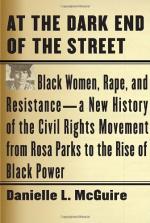|
This section contains 1,280 words (approx. 5 pages at 300 words per page) |

|
The Civil Rights Movement
Summary: The Civil Rights Movement in the 1950s and 1960s changed the course of history for African Americans all over the United States. The colossal court ruling of Brown v. Board of Education in 1954, the strong leadership of Dr. Martin Luther King Jr. and Malcolm X, and the political and legislative strides led by Presidents John Kennedy and Lyndon Johnson all contributed to the cause to end racial oppression. Fifty years later, obvious fundamental problems still exist in society today pertaining to racial issues, and another radical movement in favor of the advancement of African Americans is in order.
The Civil Rights Movement has taken monumental strides over the past 50 years, with much its progress due to equally monumental Supreme Court rulings. Through almost 60 years between Plessy v. Ferguson and Brown v. Board of Education, African-Americans were still living constitutionally deprived lifestyles. From fundamental rights such as education to petty laws such as seating arrangements on public transportation, Blacks in America were in no way, shape, or form living equal lives to that of whites. Trying to turn attention from any potential evidence that would lead to the condition being declared unequal and therefore unconstitutional by the courts, tons of white radicals across the nation (mostly in the deep South) made ardent attempts to ensure their superior lifestyle. Much to the efforts of these men, the Supreme Court ruled that the decision of Plessy v. Ferguson was unconstitutional through the Brown v. Board of Education case in...
|
This section contains 1,280 words (approx. 5 pages at 300 words per page) |

|


